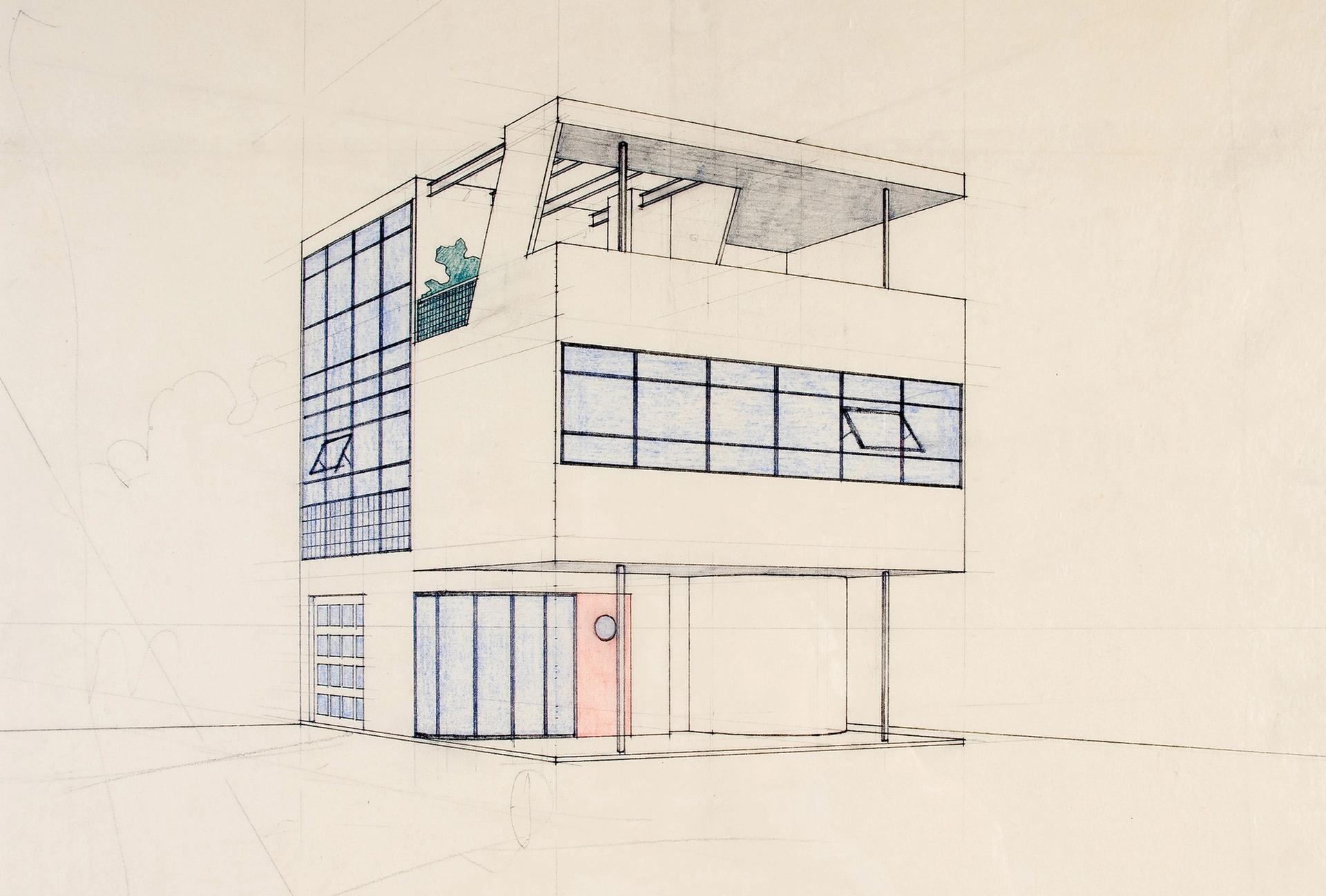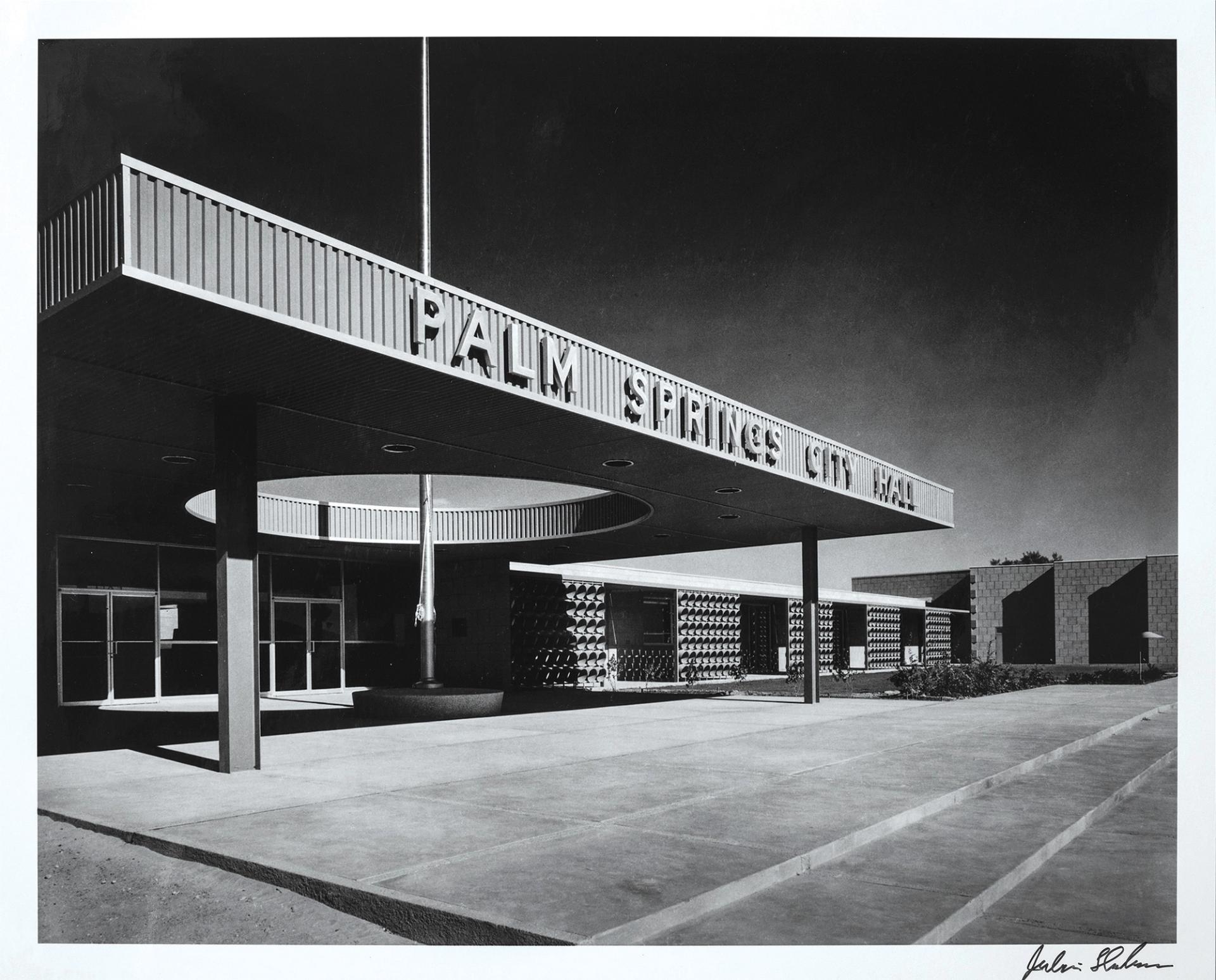In 1931, an oblong, three-storey building clad in shiny aluminium became a sensation at the biennial expo of the Allied Arts and Industries and Architectural League in New York. Designed by Albert Frey, a young Swiss architect newly arrived from Le Corbusier’s atelier, and the American architect A. Lawrence Kocher, the Aluminaire House signalled the future—built of ready-made materials and intended to be affordable for a middle class trying to throw off the shackles of the Great Depression. The next year, it was featured in the historic Modern Architecture: International Exhibition at the Museum of Modern Art.

Hip to be square: a 1931 pencil sketch of the Aluminaire House Courtesy of Special Collections, John D. Rockefeller Jr. Library, The Colonial Williamsburg Foundation
Since then, it has moved around, been used as a guesthouse and fallen into dereliction. In 1987 it was rescued by the architect Michael Schwarting, and he, later joined by his fellow architect Frances Campani, used it as a teaching tool at the New York Institute of Technology on Long Island. However, the structure had to be put into storage when most of the campus closed in 2004.
A dozen years later, they found themselves warmly welcomed in Palm Springs, California, when they talked about the house during the city’s annual Modernism Week festivities. In 2017, they shipped the Aluminaire container across the country, and eventually gifted it to the Palm Springs Art Museum (PSAM). Then came Covid-19, followed by the need to select the site, draw up plans and raise the money to make it all happen. Today, the Aluminaire rises again in its own compound next to the PSAM.

California dreaming: Albert Frey photographed around 1955 with his Ford Thunderbird sports car; having moved from New York, he spent most of his life in Palm Springs Palm Springs Art Museum
“Frey is important on many historical levels,” says Leo Marmol, a Los Angeles-based architect and PSAM board member who helped oversee the reinstallation. He “trained with a true master and then emigrated to the US, bringing the ideals of European Modernism both from a design perspective and also from a political perspective—that is, a socialist perspective”. For compliance reasons, the interior of the house will not be accessible to the public, says Marmol, but “you can walk around the sidewalk and look inside”. Final costs for the project—including planning, site preparation, construction and publicity—will be $2.6m, all raised by the museum.

Mid-century marvel: Palm Springs City Hall (1958) was one of several landmark buildings Frey’s architectural practice designed for the city Photo: Julius Shulman; © J. Paul Getty Trust
Palm Springs is an apt location for the building; Frey moved to the city at the end of the 1930s and lived there until he died in 1998. He was responsible for high-profile public buildings in Palm Springs, such as City Hall and the Tramway Gas Station (now the city’s visitor centre), as well as private residences. Today, he is known as the father of Desert Modernism. After he died, his own final domicile, Frey House II, was given to the PSAM, where it sits on a ledge overlooking the museum.
“We really wanted it in the public eye, as part of the city,” Campani says.
• The official opening of the Aluminaire House is scheduled for 23 March; an exhibition at the Palm Springs Art Museum Architecture and Design Center, Albert Frey: Inventive Modernist, continues until 3 June


